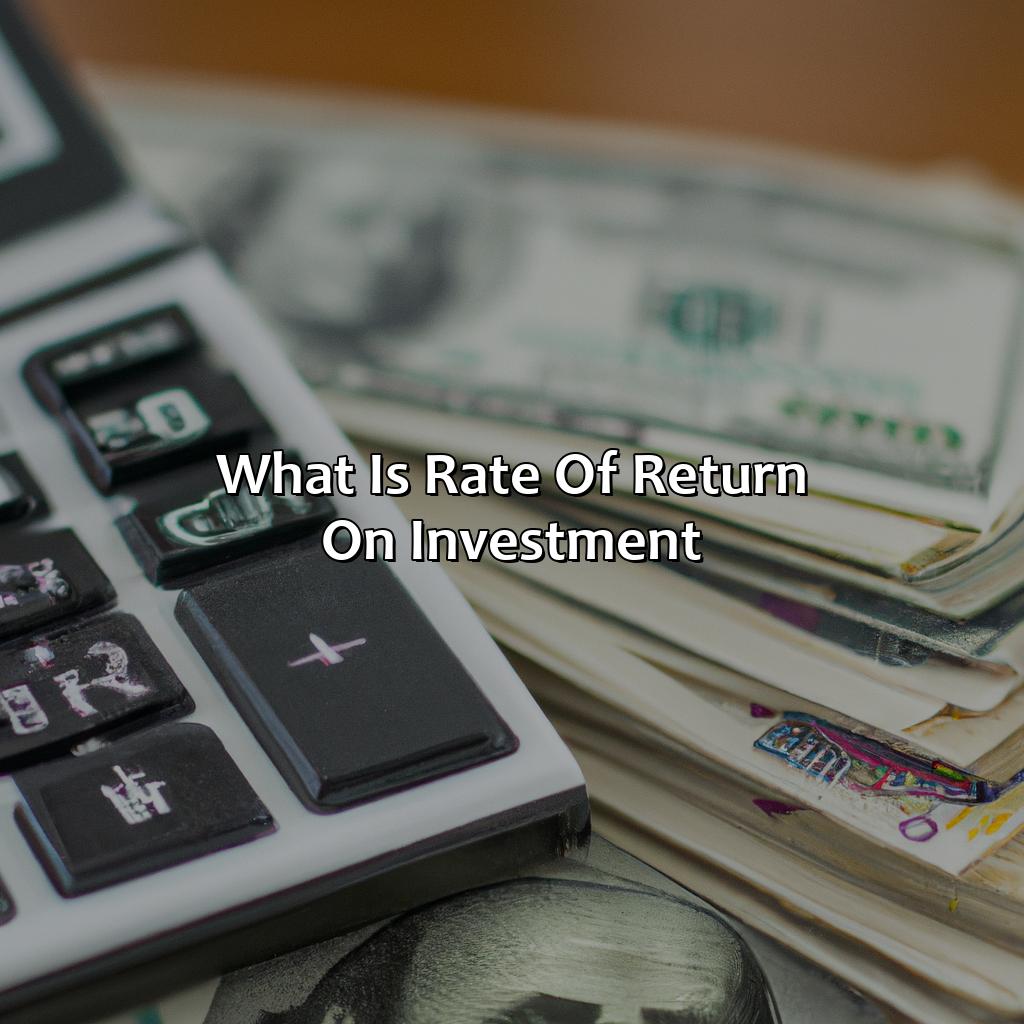What Is Rate Of Return On Investment?
Key Takeaway:
- Rate of Return on Investment (ROI) is a performance measure used to evaluate the efficiency of investment. It determines the percentage gain or loss of an investment relative to its initial cost.
- The formula for calculating ROI is: (Gain from Investment – Cost of Investment)/Cost of Investment x 100%. This formula helps investors to compare and choose between multiple investment options.
- ROI is a commonly used metric in investment decision making as it helps investors to assess the profit and risk of their investment. A high ROI signals that an investment is profitable, while a low ROI indicates a low-gain or high-risk investment.
Are you feeling overwhelmed trying to figure out the rate of return on investments you make? This article outlines and explains the concept of rate of return on investments, helping you to make informed decisions. You deserve to make wise decisions on your investments!
Definition of Rate of Return on Investment (ROI)
Rate of Return on Investment (ROI) refers to the profitability of an investment. It measures the gain or loss and is expressed as a percentage of the initial investment. ROI is significant in assessing the performance of a particular investment, enabling investors to make informed decisions.
To calculate ROI, subtract the initial investment from the current value of the investment and divide the result by the initial investment. The formula is (Current Value of Investment – Initial Investment) / Initial Investment x 100.
ROI helps investors to determine if an investment is worth making by comparing it to other investment options. It is an essential tool that enables investors to evaluate past performance, forecast future returns, and identify opportunities that will yield higher profits.
It is vital to understand that ROI does not take into account factors such as inflation, taxes, and risk. Inflation and taxes may eat into your profits, while risks could lead to loss of your investment capital. Therefore, it is crucial to analyze these factors before making an investment decision to ensure you get the best ROI.
Pro Tip: Always consider inflation, taxes, and risk when analyzing an investment opportunity to get a real picture of your ROI.
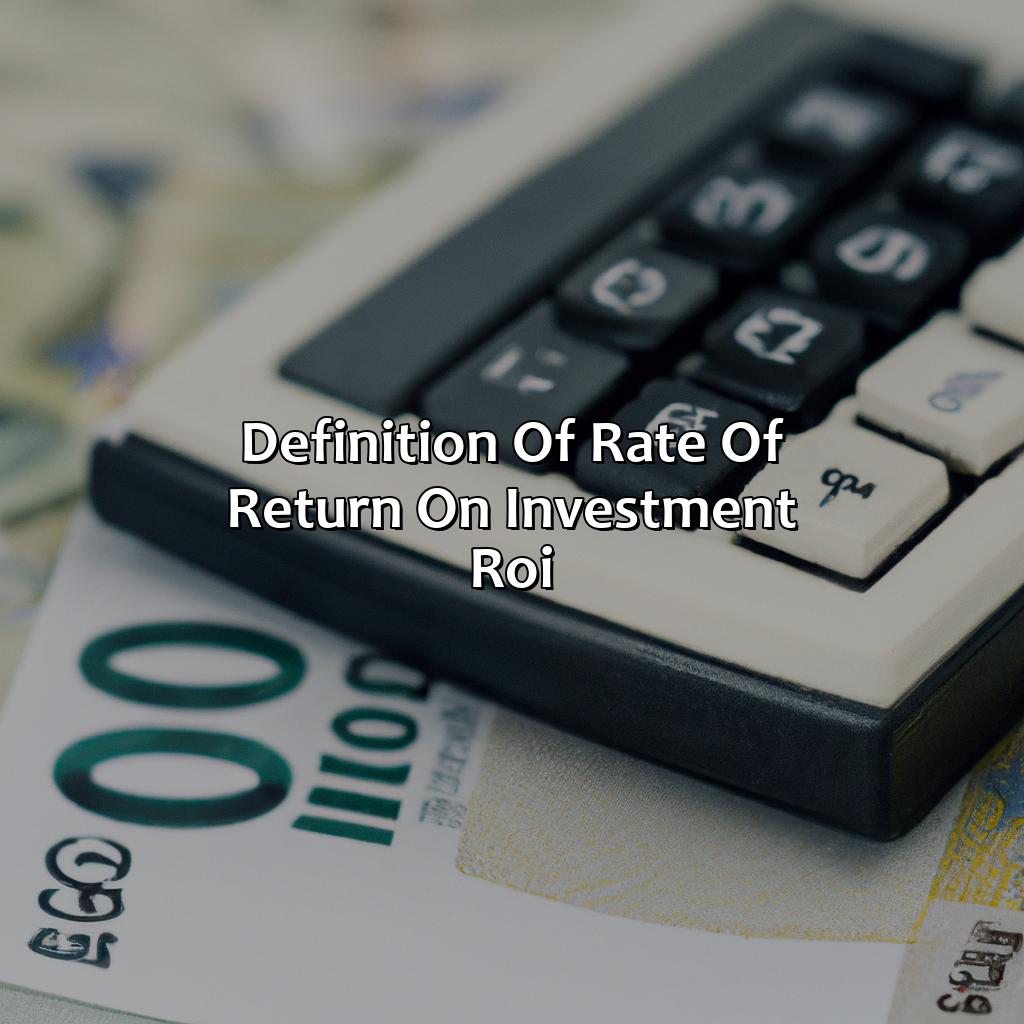
Image credits: retiregenz.com by Joel Arnold
Formula for calculating ROI
To determine the profitability of an investment, one can calculate its Rate of Return on Investment (ROI). The formula of ROI involves dividing the net profit or gain of an investment by the total cost of the investment and expressing the outcome as a percentage. This provides investors with an understanding of how efficiently their investment has performed over a specific period.
ROI calculation = [(Net Profit / Total cost of investment) * 100]
ROI calculation helps investors in evaluating the performance of their investments, determining which investment opportunities are more lucrative and comparing the returns of one investment over another. By utilizing this formula, investors can better assess whether the anticipated return is worth the risk.
It’s important to note that ROI is just one of the many important factors that are used to evaluate the financial success of the investment for insightful decision-making. Investors should consider other variables such as risk tolerance, market conditions, and other financial metrics that are specific to their unique situation.
As an investor, you strive to maximize your returns on investments. By utilizing the ROI formula, you can assess your investments and make informed decisions for the future. Don’t miss out on an opportunity to make the most of your investments. Calculate your ROI today!

Image credits: retiregenz.com by James Woodhock
Importance of ROI in investment decision making
Investors consider the returns on investment to be the most crucial aspect while making investment decisions. The ROI or rate of return on investment is a vital factor that investors look at as it indicates the profitability of the investment. This metric plays a significant role in determining the direction of the investor’s money. By evaluating the ROI, investors can assess the effectiveness of investment strategies and make better decisions for their portfolio.
The importance of ROI is evident in both short-term and long-term investments. It helps investors understand the returns that they can expect from their investments and enables them to compare multiple investment options. By analyzing historical ROI data, investors can make predictions for future returns. This assists investors in making informed investment decisions that align with their financial goals.
Investors must also consider other factors such as risk, liquidity, and market trends when making investment decisions. By analyzing the ROI data alongside these factors, investors can make informed investment decisions that correspond with their risk appetite, liquidity requirements, and the market scenario.
Without considering the ROI of an investment, an investor might miss out on potentially profitable opportunities. Therefore, investors must evaluate ROI before making crucial investment decisions.

Image credits: retiregenz.com by Adam Woodhock
How to improve ROI
Improving Your Investment’s Returns
It’s vital to understand how to improve your investment’s returns effectively. The primary objective would be to ensure that your investments yield high returns with minimal risks. This requires a well-articulated investment plan, taking into account market conditions, diversification, and maintaining a long-term perspective.
Diversifying investments significantly helps mitigate risks and maximize returns. By investing in a mix of real estate, stocks, bonds, and commodities, investors can position themselves for profits in various market conditions. Moreover, keeping a long-term perspective allows for small returns to compound over an extended period, resulting in substantial returns.
To further increase your ROI, analyzing your investments every so often and making adjustments as necessary is key. Always be in the know of your investments’ market trends to make informed decisions and achieve your investment objectives.
Pro Tip: Investing in Exchange Traded Funds (ETFs) can be a smart move as they are often low-cost, tax-efficient, and offer diversification of assets.
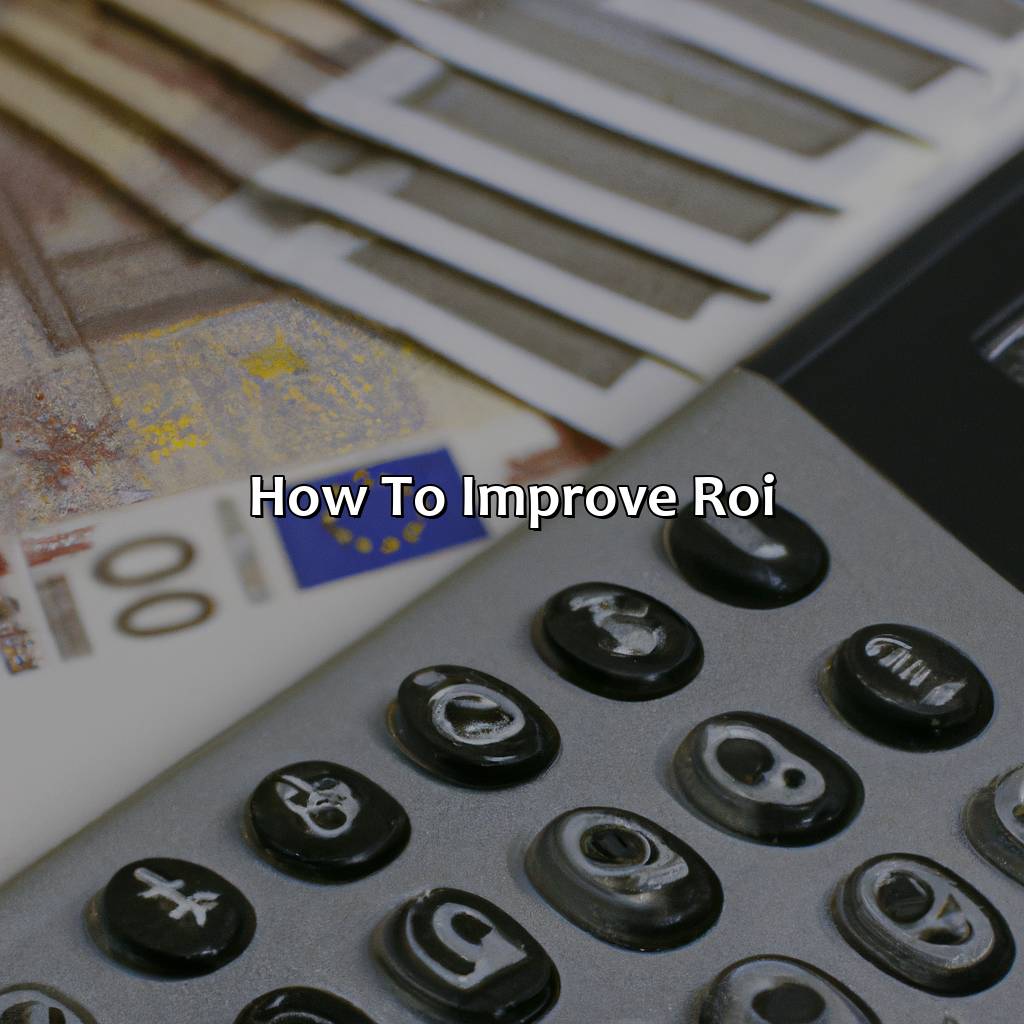
Image credits: retiregenz.com by David Arnold
Factors affecting ROI
Factors Impacting Rate of Return on Investment
Achieving a high rate of return on investment depends on various factors, such as the chosen investment strategy, market volatility, economic conditions, and interest rates.
The investment strategy selected, such as value or growth, plays a vital role in determining the return on investment. Market volatility influences investment returns, as the market can either rapidly increase or drastically decline.
Furthermore, economic conditions, like inflation and unemployment, have a significant impact on the performance of investments. High inflation leads to an increase in the cost of goods and services, ultimately resulting in lower returns. Alternatively, low unemployment rates signify increased consumer confidence, leading to higher investment returns.
Additionally, the prevailing interest rates in the market have an impact on the returns on investment. Higher interest rates decrease the present value of future cash flows, which can lead to lower returns. Therefore, it is essential to monitor interest rates and take necessary actions to combat their potential impact.
It is noteworthy that choosing a diverse portfolio with a mix of low-risk and high-risk investments can help to mitigate the impact of any single investment’s underperformance. As per the source, “Diversification is the only free lunch in investing,” said by Harry Markowitz, the father of Modern Portfolio Theory.
In summary, investing can be a rewarding experience, but the rate of return depends on specific factors that need to be considered before making any investment decisions.
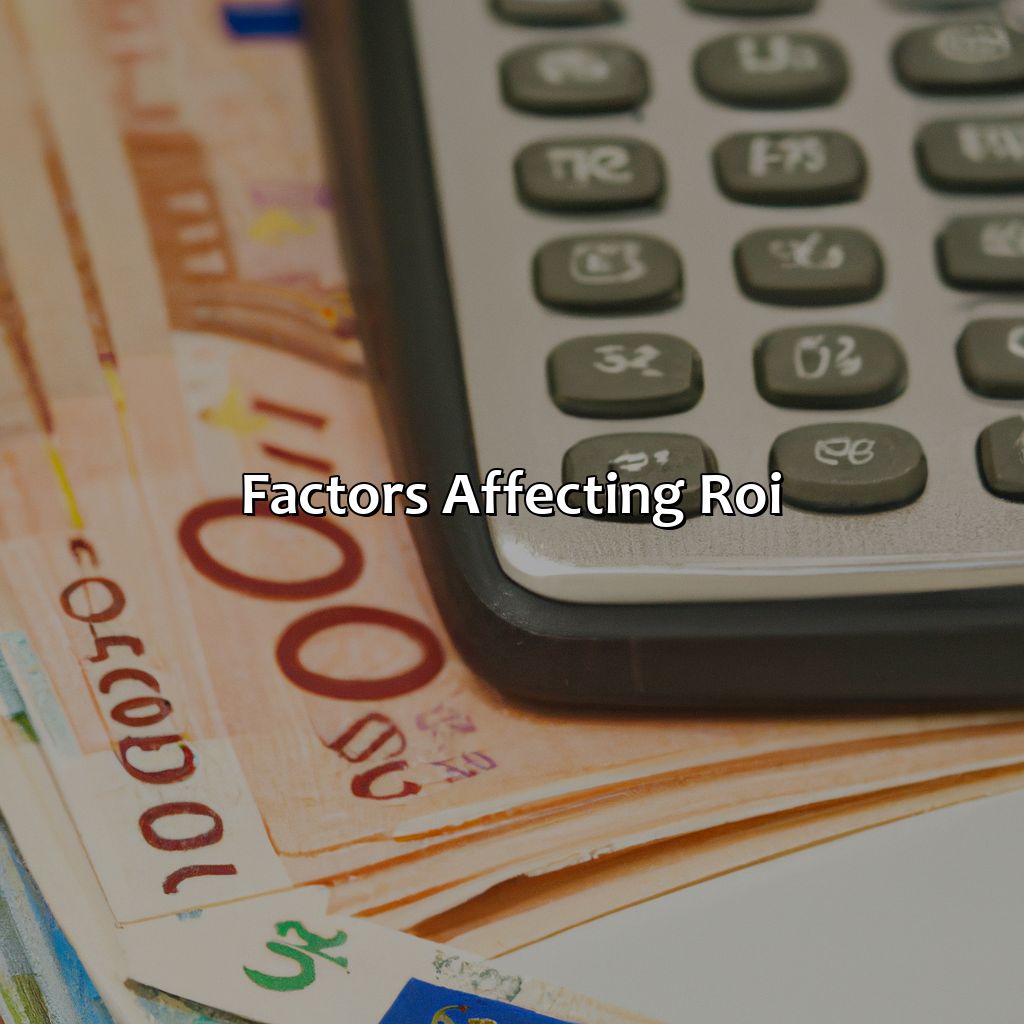
Image credits: retiregenz.com by Yuval Jones
Examples of ROI calculation in different investment types
ROI Calculation in Different Investment Types
ROI (Rate of Return on Investment) is a financial metric used to determine the profitability of an investment. This metric helps investors to compare the returns of different investments. Here are some examples of ROI calculation in various investment types.
| Investment Type | Initial Investment | Return | ROI |
| Stocks | $10,000 | $12,000 | 20% |
| Real Estate | $50,000 | $60,000 | 20% |
| Mutual Funds | $5,000 | $5,500 | 10% |
It’s important to note that calculating ROI can be complex, as it depends on various factors such as the duration of the investment, taxes paid, and inflation. This is why it’s crucial to consult a financial advisor before making any investment decisions.
Investors must also pay attention to the type of investment and its associated risks. Higher returns may come with higher risks, and it’s essential to invest only what one can afford to lose.
A real-life example of a successful ROI is that of Jeff Bezos, who invested $240,000 in Amazon in 1995, which is now worth over $1.5 billion. This showcases the importance of making the right investment decisions and understanding the potential returns and risks associated with it.

Image credits: retiregenz.com by Yuval Arnold
Limitations of ROI analysis
ROI Analysis: Understanding Its Limitations
ROI analysis is a valuable tool for measuring the profitability of an investment by comparing the initial investment against its financial returns. However, it has some limitations that must be taken into account to make informed decisions.
One limitation of ROI analysis is that it focuses solely on financial returns and ignores non-financial factors like customer satisfaction, brand image, and employee satisfaction. Another limitation is that it does not consider the time value of money, failing to account for the fact that money’s purchasing power declines over time due to inflation and other factors. Furthermore, some industries have unique issues that may not be captured by ROI analysis, such as regulatory changes and shifts in consumer behaviour. Due to these limitations, the use of ROI analysis must be complemented with additional analytics to make more informed decisions.
An example of the limitations of ROI analysis can be seen in the pharmaceutical industry. The introduction of a new drug takes several years, and the research and development costs are very high. ROI analysis may not account for the amount of time that it takes to produce a profitable drug since it only analyses the initial costs and financial returns. The industry uses additional financial models to determine profitability, such as the Net Present Value and Internal Rate of Return.
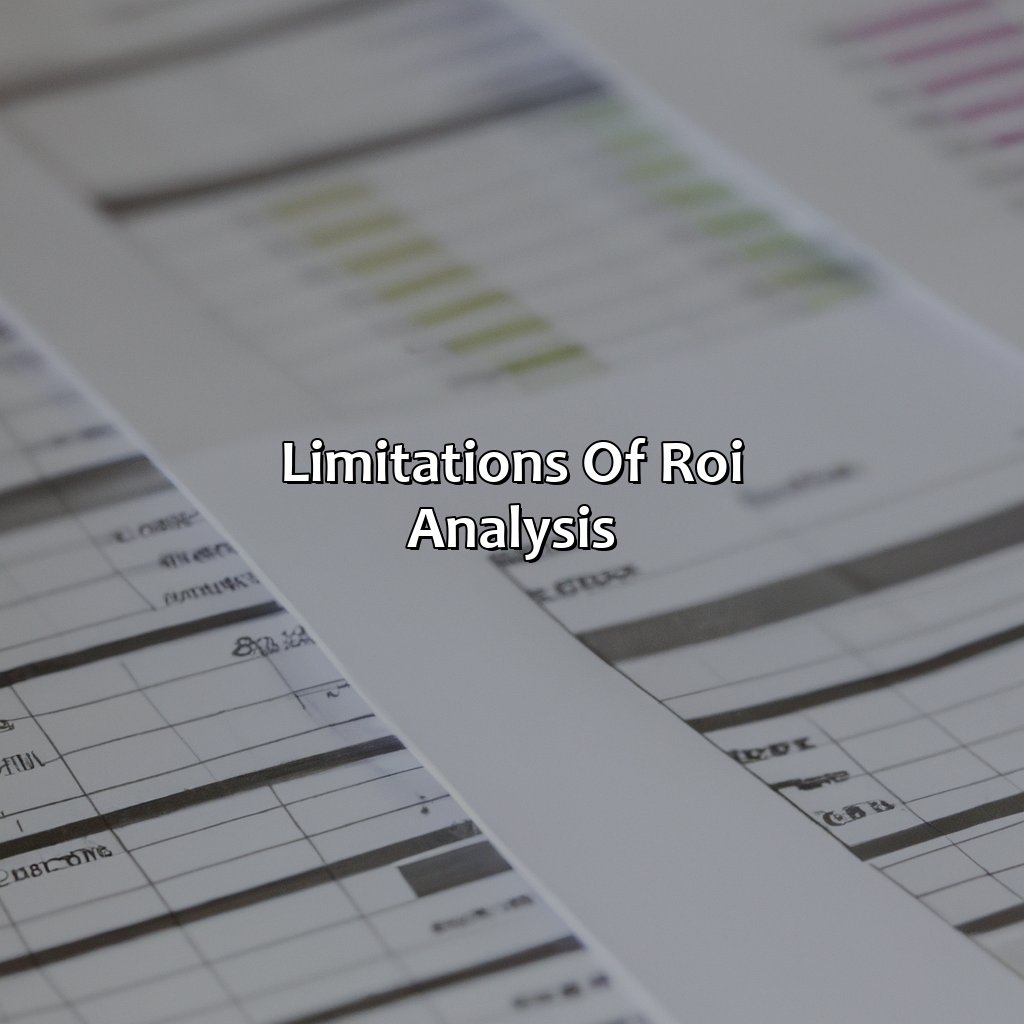
Image credits: retiregenz.com by Adam Arnold
Five Facts About Rate of Return on Investment:
Rate of return on investment is a measure of the profitability of an investment. (Source: Investopedia)
It is usually expressed as a percentage and can be calculated for different periods of time, such as yearly or monthly. (Source: The Balance)
High-risk investments generally have higher rates of return, while low-risk investments have lower rates of return. (Source: Forbes)
Some common types of investment returns include capital gains, dividends, and interest. (Source: U.S. Securities and Exchange Commission)
The rate of return can be used to compare the profitability of different investments and help investors make informed decisions. (Source: The Motley Fool)
FAQs about What Is Rate Of Return On Investment?
What is rate of return on investment?
The rate of return on investment is the percentage of profit or loss an investor gains on their investment over a given period of time. It is a measure of how profitable an investment is compared to its initial cost.
How is rate of return on investment calculated?
The rate of return on investment is calculated by subtracting the initial cost of the investment from the final value of the investment and dividing the result by the initial cost. The answer is then multiplied by 100 to get a percentage rate of return.
Why is it important to know the rate of return on investment?
Knowing the rate of return on investment is important because it allows investors to evaluate the profitability of an investment and make informed decisions about future investments. It also helps investors to compare the performance of different investments.
What is a good rate of return on investment?
A good rate of return on investment depends on the type of investment, the risk involved, and the current market conditions. Generally, a rate of return that is higher than the market average is considered good.
What are some factors that can affect the rate of return on investment?
Some factors that can affect the rate of return on investment include inflation, interest rates, market volatility, and changes in the economy. The level of risk associated with an investment can also impact the rate of return.
Can the rate of return on investment be negative?
Yes, the rate of return on investment can be negative if the final value of the investment is lower than the initial cost. This means that the investor has experienced a loss on their investment.
 Checkout this IRS Loophole
Checkout this IRS Loophole 
